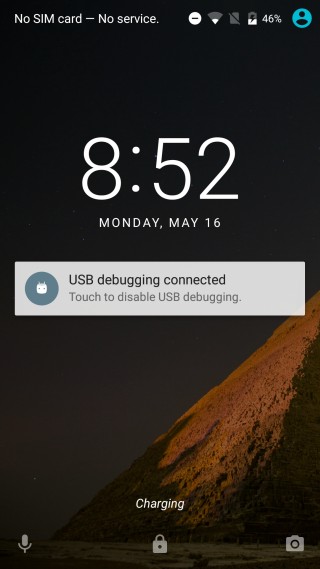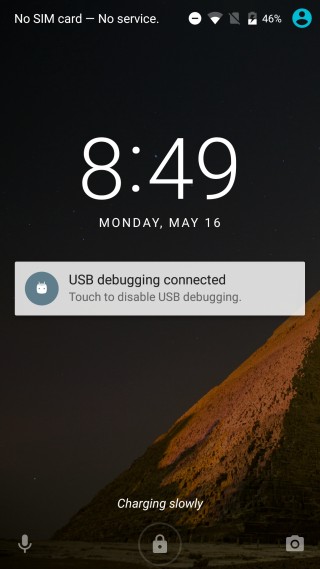How To Identify And Troubleshoot A Slow Charging Android Phone Problem
You can charge an Android phone, and just about all other smartphones, by either connecting them to your laptop, PC/Mac, or by plugging them into a wall outlet. You might have noticed that sometimes your phone takes hours to charge when you connect it to your laptop but charges much faster when you connect it to a wall outlet. You might think it’s because your laptop isn’t capable of charging the phone faster but that’s not the case. Your Android phone might be charging slowly for a number of reasons one of which might be a defective data cable. There can also be other reasons that cause it to charge slowly and you might be suspecting your data cable of being the cause of it. Here’s how to identify what might cause your Android phone to charge slowly.
An Android phone running Android 6.0 and above will tell you if it’s charging normally or charging slowly. When it’s charging normally, the lock screen will read ‘Charging’ and when it’s slow, it will read ‘Charging Slowly’. To test your data cable and find what’s causing the slow charge, run it through the following cases.


Test Cases
Case 1: Your laptop is on battery power. It’s possible your OS or the hardware on your laptop restricts how fast a device connected via USB can charge when your system is running on a battery. Try plugging your system into a power outlet and see if the charging speed increases to normal.
Case 2: The USB port is defective or slow. A device might charge slowly if there is something wrong with the USB port you’ve connected it to. Try changing ports to find one that has more power and can charge your phone faster.
Case 3: Assuming changing USB ports and plugging your laptop into a wall outlet doesn’t get your phone to charge faster, it’s possible there is something wrong with the laptop or that the hardware just can’t charge your phone as fast as it should. Try connecting your phone to a different laptop. We tested this theory out with an old Dell model that’s always had a problem with its power supply unit and internal wiring. The laptop has been known on occasion to shock a user and despite changing ports and making sure it was connected to a power source, the phone in question continued to charge slowly. It was then connected to a newer (and seriously awesome) HP model. The first port we connected it to resulted in a slow charge. The port was changed and the phone began to charge at normal speed.
Case 4: Connect your phone to a wall outlet. Make sure the outlet isn’t run on a UPS system and that you’re connecting it directly instead of plugging it into an extension board. If it continues to charge slowly, there is likely a problem with your data cable.
The Solution
If your phone fails to charge normally through all of the above four test cases, your data cable might be to blame. Swap it out for a new one and try to use a cable that’s certified and approved by the manufacturer of your phone. Run the four test cases again. A counterfeit or low quality cable will likely fail them all so you will need to find a better cable. If after changing the cable, your phone charges normally when connected to a power outlet but is still slow to charge on your laptop, the problem of slow charge resides on the laptop you’re connecting it to.
A Caveat
Sometimes a phone might show that it’s charging fast. You’re not likely going to consider it a bad thing but you should always be cautious if this suddenly starts happening. It might indicate an abnormal power surge being sent to your device from a laptop or even a power outlet. Iv’e personally experienced my iPhone being charged to 100% in thirty minutes when connected to the defective Dell mentioned in Case 3. This was after a new power adapter had been purchased. It burned up the first day of use shortly after I disconnected an usually warm iPhone from my laptop. The Dell refused to turn on after that and had to be taken in for repairs. A phone charging too fast may or may not be dangerous. Check if your phone is heating up when it suddenly starts charging very fast when connected to a source that charged it normally or slowly in the past. If so, you might want to stop using that particular source to charge it.

The part of this article that is incorrect or not mentioned is that the Windows operating system only allows a maximum of 500 milliamps power on the USB bus that’s why it is underpowering the amount of current being supplied to your smartphone or tablet. Some of the more recent laptops have designated ports for exceeding the 500ma limit. Also, there are USB hubs being sold today that have a designated USB port isolated for charging and not connected to the USB bus.